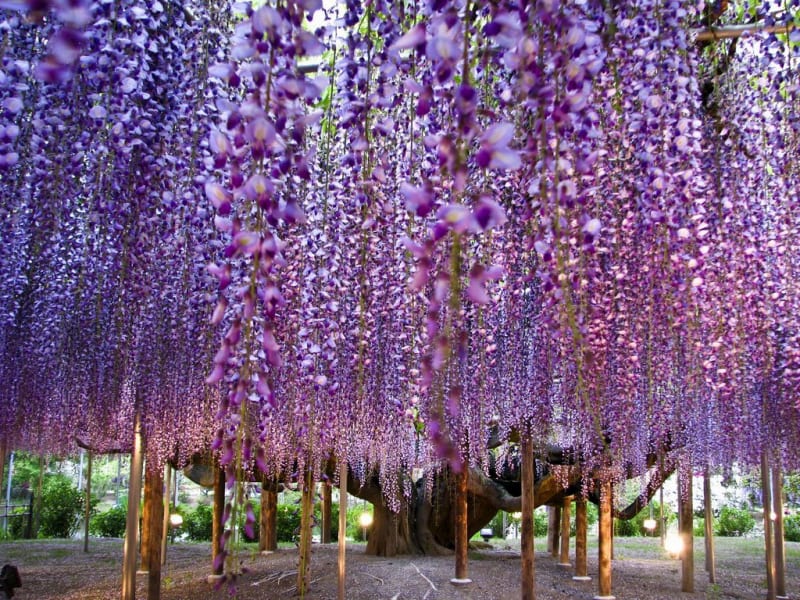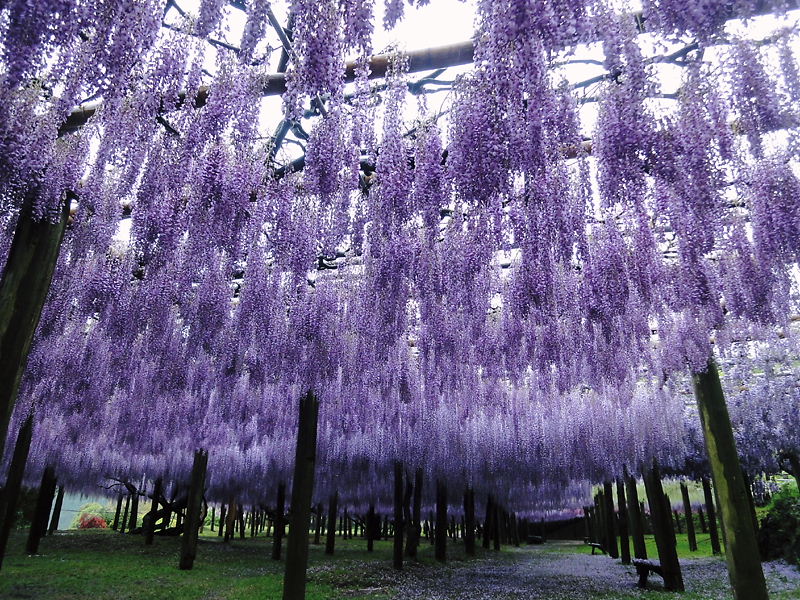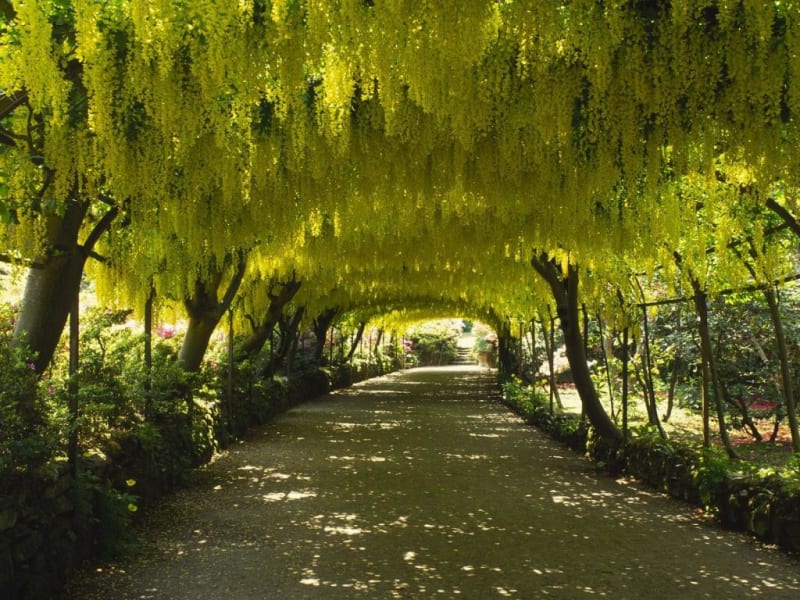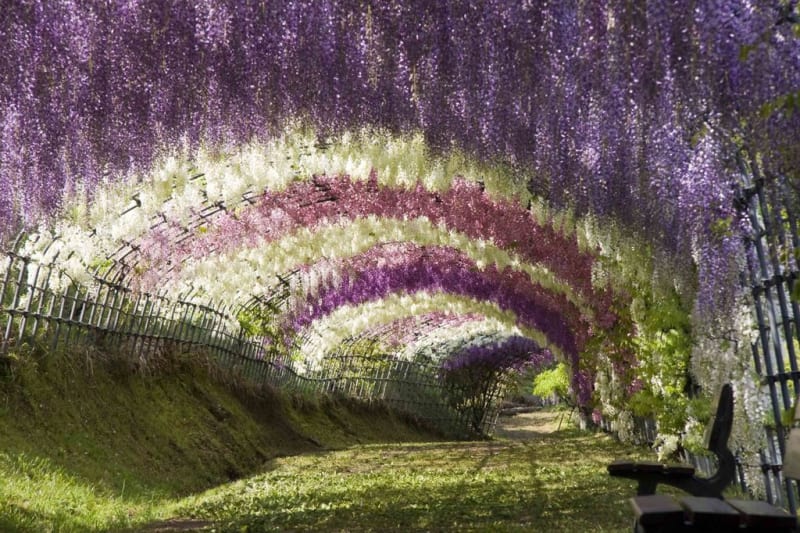Kawachi Fuji Garden
Kawachi Fuji Garden – is a Japanese flower garden located near Tokyo, in Kitakyushu. This park is known for its flower tunnels, in which both Japanese and numerous tourists come for a walk. These tunnels are made of frames accused of glycini, which hangs with colorful garlands as if from the ceiling. The art of growing gardens – is the national treasure of Japan, but the special beauty of this particular attraction makes it a favorite vacation spot for residents and tourists.

Most of all in Kawati Fuji glycini. As you know, it is glycini that is a symbol of Japan and in Japanese they are called « Fuji ». The most famous mountain in Japan – Fujiama – is called this beautiful flower and literally means « Mountain Glycinius ». In Japan, « Fuji », glycinius, or as it is also called in Europe – vysteria, symbolizes protection, healing, pure female beauty, poetry, and youth. The flower is very popular, it is distributed throughout Japan, and, it is worth noting, in its popularity it is not even inferior to a sakura - cherry color. Due to its pleasant aroma, glycinium is also used to produce perfumery in fashionable houses such as Nina Ricci, Elizabeth Arden, Dolce and Gabbana. Japanese visteria meets all the shades of the rainbow, and its hanging branches look great on special frames in the shape of a tunnel. Of course, the most popular and most beautiful such flower tunnel is in the Kawati Fuji garden, and is called « Tunnel Wisteria ». The height of this plant reaches 15 meters, which allows you to create huge frames to support lianas. In East Asia and North America, 9 species are found.
To get to the peak of glicia bloom, when you can take magnificent pictures of her magnificent clusters, you need to come to Kawati Fuji in mid-May. You can also see other flowers in the garden that are grown in greenhouses. However, at other times, the flower garden will be beautiful. In early spring, draining blooms there, then daffodils, hyacinths and tulips. In April-May, the garden flashes bright colors of rhododendrons and azalea. In May-June, 1,500 rose bushes bloom. Summer in Kawati Fuji – time for clamatitis, hydrangeas, irises. The last thumpy saffron blooms. And next spring, the park again opens the door to hit tourists with waterfalls of colorful glycins.










